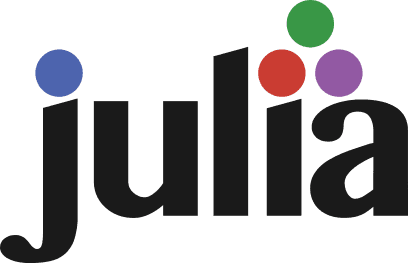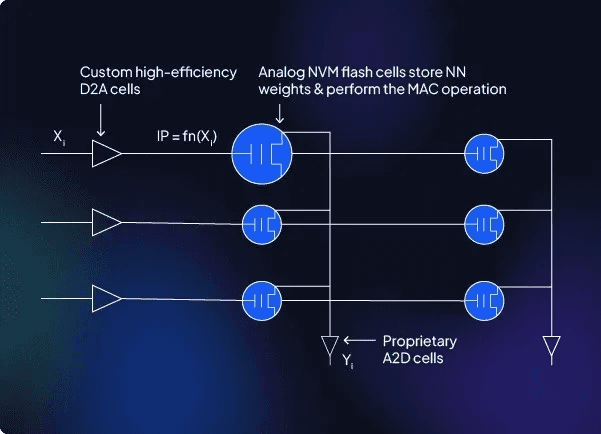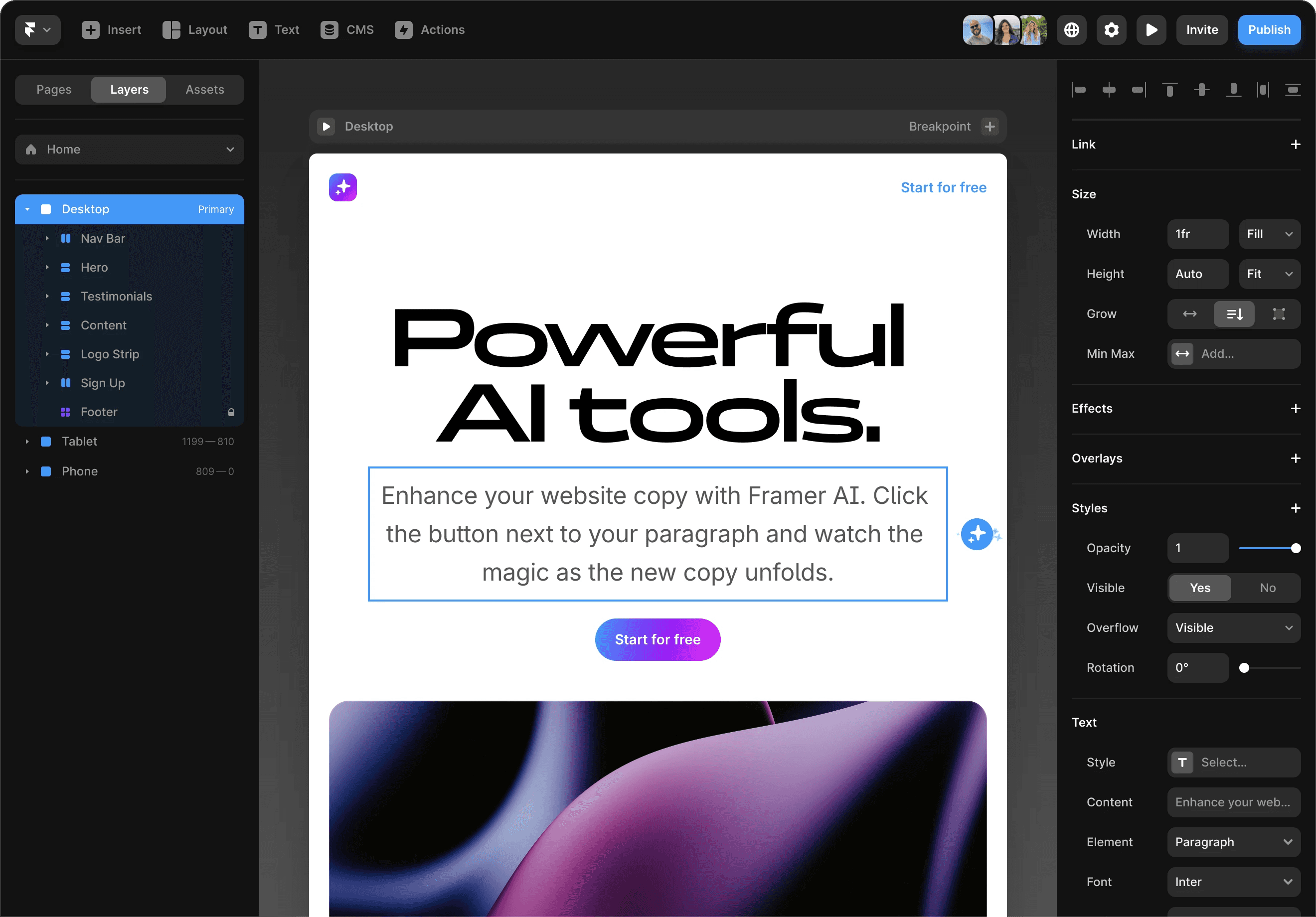Programming
Understanding Domain-Specific Languages (DSLs)
Domain-Specific Languages (DSLs) like Julia in scientific computing.
4. 2. 2025
What Are DSLs?
Domain-Specific Languages (DSLs) are specialized programming languages created to address the unique challenges of a particular domain. Unlike general-purpose languages (GPLs) that are designed to handle a broad spectrum of applications, DSLs are tailored for specific tasks, offering syntax and features that resonate with the domain's inherent complexity. This specialization translates to more intuitive code and optimized performance, making DSLs an attractive option for scientific computing, data analysis, financial modeling, bioinformatics, and more.
The Evolution of DSLs in Scientific Computing
The concept of DSLs is not new, but recent advancements have propelled them into the spotlight. Initially developed to simplify routine tasks within niche applications, modern DSLs are now equipped with features that rival traditional programming languages. They offer robust support for:
Automatic Differentiation: Essential for optimization and machine learning tasks.
Parallel and Distributed Computing: Harnessing multi-core and GPU architectures to manage massive datasets and complex simulations.
Interoperability: Seamlessly integrating with other languages and tools to leverage existing codebases and libraries.
These enhancements not only streamline computational workflows but also empower researchers to focus on solving domain-specific problems without getting bogged down by general-purpose programming limitations.
Why DSLs Are a Game-Changer in Scientific Computing
1. Bridging the Performance Gap
High-Level Simplicity Meets Low-Level Efficiency
One of the most compelling aspects of DSLs is their ability to combine the ease-of-use of high-level languages with the performance characteristics of low-level languages like C or Fortran. For instance, Julia has emerged as a flagship DSL in the scientific community. It offers a syntax that is accessible to users familiar with languages such as Python, yet it compiles to highly optimized machine code. This unique combination ensures that scientists can write code quickly and intuitively without sacrificing computational efficiency.
Real-World Impact on Computation-Intensive Fields
In fields like climate modeling, computational fluid dynamics, and quantum mechanics, the sheer volume of data and the complexity of algorithms demand both rapid prototyping and high-performance execution. DSLs provide a solution by:
Reducing development time through concise, readable code.
Enhancing execution speed with performance optimizations tailored to the task.
Allowing rapid iterations, enabling researchers to test and refine models more efficiently.
2. Addressing Domain-Specific Challenges
Custom-Built for Specialized Tasks
Each scientific discipline comes with its unique set of challenges. DSLs are designed to address these head-on. Consider the field of automatic differentiation, which is crucial for optimization in machine learning. DSLs integrate built-in mechanisms for computing derivatives, significantly reducing the overhead for developers. This not only improves performance but also minimizes the potential for human error in complex mathematical computations.
Optimizations for Parallelism and Distributed Computing
Modern research increasingly relies on parallel computing to tackle large-scale simulations and data processing tasks. DSLs are evolving to incorporate native support for parallelism, enabling seamless distribution of computational workloads across multiple processors or even different nodes in a cluster. This built-in parallelism is particularly beneficial in applications like:
Big Data Analytics: Where massive datasets require distributed processing.
High-Performance Simulations: Such as weather forecasting and astrophysics research.
Financial Modeling: Where real-time analysis of market data demands rapid, concurrent computations.
3. Catalyzing Innovation and Research
Accelerating Prototyping and Experimentation
The traditional software development cycle can be a bottleneck in scientific research. DSLs streamline this process by allowing researchers to write more expressive code that directly reflects domain concepts. This not only accelerates prototyping but also facilitates faster iteration cycles. As a result, breakthroughs in areas such as genomics, material science, and renewable energy are happening at an unprecedented pace.
Empowering Interdisciplinary Collaboration
Scientific challenges today are rarely confined to a single discipline. DSLs promote collaboration by providing a common platform where experts from different fields can converge. For instance, a biologist and a data scientist might collaborate on developing a new bioinformatics tool, each contributing their expertise without the friction of reconciling different programming paradigms. This interdisciplinary synergy is crucial for addressing complex global issues like climate change and pandemics.
In-Depth Look: Julia – The Flagship DSL
The Genesis of Julia
Developed with scientific computing in mind, Julia has quickly become synonymous with performance and ease-of-use. Its inception was driven by the need for a language that could overcome the "two-language problem"—the common scenario where prototyping is done in a high-level language like Python, but the final production code requires a low-level language like C for performance.
Key Features and Advantages
1. Just-in-Time (JIT) Compilation
Julia’s JIT compilation allows it to convert high-level code into optimized machine instructions on the fly. This results in near-native execution speeds, making it ideal for tasks that require heavy numerical computations. Whether you are simulating complex physical phenomena or processing large datasets, Julia’s JIT capabilities ensure minimal latency.
2. Dynamic and Expressive Syntax
While performance is critical, so is usability. Julia offers a dynamic and expressive syntax that encourages rapid development and experimentation. Its syntax is both intuitive and flexible, allowing for the creation of complex mathematical models with minimal boilerplate code. This user-friendly design is particularly beneficial for researchers who may not have extensive backgrounds in computer science but need to develop robust computational models.
3. Rich Ecosystem and Community Support
The success of any programming language is heavily dependent on the ecosystem that surrounds it. Julia boasts a vibrant community and a rapidly growing collection of packages covering a wide range of applications—from machine learning and data visualization to differential equations and optimization. This ecosystem not only accelerates development but also fosters collaboration and innovation across different scientific disciplines.
4. Interoperability with Other Languages
One of Julia’s standout features is its ability to interface with other programming languages, including Python, C, and Fortran. This interoperability means that organizations can integrate Julia into existing projects without a complete rewrite of their codebase. It also allows researchers to leverage the strengths of multiple languages, creating hybrid solutions that are both efficient and versatile.
Real-World Applications of Julia
Climate Modeling: Researchers use Julia to develop high-resolution climate models that can simulate complex atmospheric phenomena with remarkable accuracy.
Biomedical Research: In genomics and drug discovery, Julia’s capabilities are harnessed to analyze vast datasets and model biological processes at the molecular level.
Financial Engineering: Julia’s speed and precision make it an ideal tool for modeling financial markets, performing risk analysis, and optimizing trading algorithms.
Quantum Computing: As quantum technologies evolve, Julia is being explored as a language for simulating quantum circuits and developing algorithms that leverage quantum principles.
Exploring the Broader DSL Landscape
Emerging DSLs and Their Unique Strengths
While Julia leads the charge in scientific computing, it is far from the only DSL making waves. Various new languages and extensions are being developed to target specific domains:
1. DSLs for Automatic Differentiation
Automatic differentiation is critical in many scientific and engineering applications. New DSLs are emerging that offer native support for this feature, enabling researchers to compute derivatives with high precision and minimal manual intervention. These languages are particularly valuable in the fields of machine learning and optimization, where gradient-based methods are the norm.
2. DSLs for Parallel and Distributed Computing
As computational tasks grow in scale and complexity, there is an increasing need for languages that can effectively manage parallelism. DSLs designed for parallel computing are being developed to optimize the distribution of tasks across multiple cores and nodes, ensuring efficient use of computational resources. These languages are ideal for big data analytics, large-scale simulations, and real-time data processing.
3. DSLs for Domain-Specific Optimization
Certain applications, such as financial modeling or bioinformatics, require specialized optimization techniques that go beyond generic solutions. DSLs in these areas are being designed with custom-built libraries and algorithms that cater to the unique challenges of the domain. This targeted approach not only enhances performance but also improves the accuracy and reliability of the results.
Case Studies: DSLs in Action
Case Study 1: Revolutionizing Climate Research with DSLs
A leading climate research institute faced significant challenges in modeling long-term climate patterns due to the enormous volume of data and the complexity of the models. By adopting a DSL specifically tailored for high-performance numerical computing, the research team was able to:
Accelerate the development of simulation models.
Achieve near-real-time processing of climate data.
Improve the accuracy of predictions by integrating advanced automatic differentiation techniques.
The success of this project not only underscored the power of DSLs in handling complex scientific computations but also paved the way for similar applications in other research domains.
Case Study 2: Accelerating Drug Discovery in Bioinformatics
In the competitive field of drug discovery, speed and precision are paramount. A biotechnology company leveraged a DSL designed for bioinformatics to streamline its genomic data analysis and molecular modeling processes. The benefits included:
Reduced computational overhead, allowing for faster iteration cycles.
Enhanced accuracy in modeling molecular interactions.
Seamless integration with existing bioinformatics tools and databases.
This approach significantly shortened the time required to identify potential drug candidates, demonstrating how DSLs can be a game-changer in life sciences.
The Future of DSLs and New Programming Paradigms
Integration of Artificial Intelligence and Machine Learning
As artificial intelligence (AI) and machine learning (ML) become ubiquitous, DSLs are evolving to incorporate intelligent features that can automate and optimize various aspects of coding and computation. Imagine a DSL that not only compiles code efficiently but also provides real-time suggestions to optimize performance based on the code's structure and the underlying hardware. These advancements could further blur the lines between development and execution, leading to smarter, self-optimizing systems.
Advancements in Compiler Technologies
The future of DSLs is closely tied to innovations in compiler technologies. Modern compilers are increasingly capable of performing sophisticated optimizations at compile time, ensuring that the high-level abstractions provided by DSLs do not come at the cost of performance. With continued advancements, we can expect DSLs to offer even more robust optimizations that rival, or even surpass, those of traditional low-level languages.
Emphasis on Security and Reliability
As DSLs are adopted in mission-critical applications—ranging from aerospace engineering to financial services—the need for secure and reliable code becomes paramount. Future DSLs will likely incorporate advanced features for security, error checking, and fault tolerance, ensuring that applications built using these languages are both robust and trustworthy.
The Role of Open Source and Community Collaboration
The rapid evolution of DSLs is being driven in large part by open source initiatives and vibrant developer communities. These communities not only contribute to the development of new features but also provide extensive libraries, frameworks, and support networks that accelerate innovation. As collaboration between industry, academia, and open source projects intensifies, we can expect a steady stream of improvements and new DSLs tailored to ever-niche domains.
How Trans4mation Business Solutions Empowers Your Journey
At Trans4mation Business Solutions, we understand that staying ahead in today’s competitive technological landscape means embracing the future of computing. Our expertise in DSLs and new programming paradigms positions us uniquely to help your organization leverage these innovations for tangible business benefits.
Comprehensive Consultation and Strategy Development
Our team of experts works closely with your organization to assess your computational needs and determine the best DSL solutions for your projects. We provide:
Detailed Needs Analysis: Understanding your specific challenges and objectives.
Tailored Roadmaps: Designing a strategic plan to integrate DSLs into your existing infrastructure seamlessly.
Risk Mitigation: Identifying potential obstacles and ensuring that the transition is smooth and secure.
Custom Development and Integration Services
Whether you are a startup looking to prototype innovative solutions or an established enterprise aiming to modernize your systems, our custom development services are designed to meet your unique needs. We specialize in:
DSL-based Application Development: Crafting high-performance applications that leverage the full potential of DSLs.
Seamless Integration: Ensuring that new DSL solutions work harmoniously with your legacy systems and data pipelines.
Performance Tuning: Continuously monitoring and optimizing applications to ensure peak performance.
Training, Support, and Continuous Improvement
Adopting a new programming paradigm requires more than just initial development—it demands ongoing support and education. Our training programs are designed to empower your team with the skills and knowledge needed to maximize the benefits of DSLs. We offer:
In-Depth Workshops: Covering everything from the basics of DSL syntax to advanced optimization techniques.
Ongoing Technical Support: Providing expert assistance whenever challenges arise.
Community Engagement: Facilitating connections with broader developer communities to keep your team at the cutting edge of technological advancements.
Last words…
Domain-Specific Languages and new programming paradigms are more than just buzzwords—they represent a fundamental shift in how we approach scientific computing and complex problem-solving. By bridging the gap between high-level ease-of-use and low-level performance, DSLs like Julia are enabling faster development cycles, improved computational efficiency, and a new era of innovation across diverse fields.
From climate modeling and drug discovery to financial engineering and beyond, the power of DSLs is evident in their ability to tackle domain-specific challenges head-on. As the technology continues to evolve, embracing these new paradigms will be crucial for organizations looking to maintain a competitive edge and drive meaningful progress in their respective fields.
At Trans4mation Business Solutions, we are committed to guiding you through this transformative journey. Whether you are just starting to explore the potential of DSLs or are ready to integrate cutting-edge solutions into your operations, our expert team is here to support you every step of the way.
Embrace the future of scientific computing with Domain-Specific Languages. Subscribe to our newsletter for regular insights, expert advice, and the latest trends in IT programming and computational innovation. Join the community of forward-thinking organizations that are redefining what’s possible in the world of technology.Written by Matthew Drabek, IT project&product Lead
For our Services, feel free to reach out to us via meeting…
Please share our content for further education


